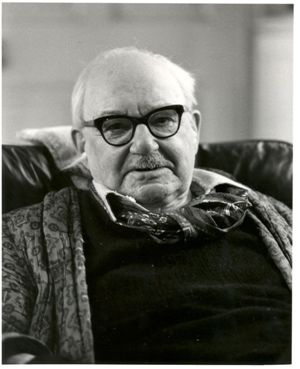John Edensor Littlewood
1885-1977.  Rouse Ball Professor of Mathematics; Fellow of Cambridge Philosophical Society. Correspondent to French, Royal Dutch, Danish & Swedish Academies.
Rouse Ball Professor of Mathematics; Fellow of Cambridge Philosophical Society. Correspondent to French, Royal Dutch, Danish & Swedish Academies.
Born in Rochester, Littlewood lived in Cape Town from the age of seven to fifteen. He then attended St Paul's School in London for three years, where he was taught by F.S. Macaulay>, now known for his contributions to ideal theory. He studied at Trinity and was the Senior Wrangler of 1905. Littlewood was elected a Fellow in 1908 and, apart from three years as Richardson Lecturer in the University of Manchester, his entire career was spent in the University of Cambridge. He was appointed Rouse Ball Professor of Mathematics in 1928, retiring in 1950. He was a Fellow of the Royal Society, and was awarded the Royal Medal, the Sylvester Medal and the Copley Medal. He was president of the London Mathematical Society from 1941 to 1943, and was awarded the De Morgan Medal and the Senior Berwick Prize.
Most of his work was in the field of mathematical analysis. He began research under the supervision of E.W. Barnes, who suggested that he attempt to prove the Riemann hypothesis: Littlewood showed that if the Riemann hypothesis is true then the Prime Number Theorem follows. This work won him his Trinity fellowship.
He coined Littlewood's law, which states that individuals can expect miracles to happen to them, at the rate of about one per month. He continued to write papers into his eighties, particularly in analytical areas of what would become the theory of dynamical systems.
Among his own doctoral students were Sarvadaman Chowla, Harold Davenport and Donald C. Spencer. His collaborative work, carried out by correspondence, covered fields in Diophantine approximation and Waring's problem, in particular. In his other work Littlewood collaborated with Raymond Paley on Littlewood-Paley theory in Fourier theory, and with Cyril Offord in combinatorial work on random sums, in developments that opened up fields still intensively studied. He worked with Mary Cartwright on problems in differential equations arising out of early research on radar: their work foreshadowed the modern theory of dynamical systems. Littlewood's inequality on bilinear forms was a forerunner of the later Grothendiecktensor norm theory.
He collaborated for many years with G.H. Hardy. Together they devised the first Hardy-Littlewood conjecture, a strong form of the twin prime conjecture, and the second Hardy-Littlewood conjecture.
In a 1947 lecture, the Danish mathematician Harald Bohr said, "To illustrate to what extent Hardy and Littlewood in the course of the years came to be considered as the leaders of recent English mathematical research, I may report what an excellent colleague once jokingly said: 'Nowadays, there are only three really great English mathematicians: Hardy, Littlewood, and Hardy-Littlewood.'"
There is a story (related in the Miscellany) that at a conference Littlewood met a German mathematician who said he was most interested to discover that Littlewood really existed, as he had always assumed that Littlewood was a name used by Hardy for lesser work which he did not want to put out under his own name; Littlewood apparently roared with laughter. He is also remembered for his book of reminiscences, A Mathematician's Miscellany, republished by Béla Bollobás in 1986 as Littlewood's Miscellany (CUP).
A memorial bench stands in Duff's Garden (part of the Fellows' Garden in Trinity College).
| Memorial inscription | Translation |
|
JOHN EDENSOR LITTLEWOOD Per annos LXIX socius in collegio lector |
John Edensor Littlewood was a Fellow for sixty-nine years, Lecturer in the College and Professor in the University. His skill in mathematics was remarkable and even in extreme old age he was busy in solving many extremely difficult problems. He was a keen rock-climber and could delight the Fellows with his conversation. He died in 1977 at the age of ninety-two. |
John Edensor LittlewoodBrass located on the north wall of the Ante-Chapel. |
|
|
|
PREVIOUS BRASS |
|
NEXT BRASS Henry Richard Luard |
| Brasses A-B | Brasses C-G | Brasses H-K | Brasses L-P | Brasses R-S | Brasses T-W |

